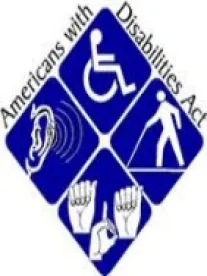Employers generally understand their obligation to provide a reasonable accommodation to qualified individuals with disabilities as required under the Americans with Disabilities Act (ADA), as well as a number of state and local laws.
A recent federal court case reminds employers that they may choose among reasonable accommodations and that as long as the selected reasonable accommodation is effective, they are not required to provide the specific reasonable accommodation requested by the employee.
In Sessoms v. Trustees of the Univ. of Pennsylvania (June 20, 2018), the Third Circuit Court of Appeals (covering Delaware, New Jersey, and Pennsylvania) ruled in the University of Pennsylvania’s (Penn) favor, dismissing an employee’s failure to accommodate claim. The employee, who suffered from mental and physical disabilities and reported having difficulties with her supervisor, requested that Penn accommodate her by permitting her to begin working part-time (before eventually returning to full-time) following her return from medical leave and by transferring her to a new “lower-stress” department with a new supervisor.
In response, Penn proposed a part-time schedule, but at the same job with the same supervisor, which the employee declined. Her employment was terminated. She then filed a lawsuit claiming that Penn did not engage in a good-faith effort to reasonably accommodate her disabilities. The court found that Penn demonstrated good faith in its negotiations with the employee and had considered her accommodation requests. The court concluded that the employee did not show that other available positions existed and that her unwillingness to consider an accommodation that included working for the same supervisor was unreasonable.
Even before this recent case, the Equal Employment Opportunity Commission (EEOC) has acknowledged that an employer is not required to provide the specific reasonable accommodation requested and can consider alternative reasonable accommodations, stating in part that:
If there are two possible reasonable accommodations, and one costs more or is more burdensome than the other, the employer may choose the less expensive or burdensome accommodation as long as it is effective (i.e., it would remove a workplace barrier, thereby providing the individual with an equal opportunity to apply for a position, to perform the essential functions of a position, or to gain equal access to a benefit or privilege of employment). Similarly, when there are two or more effective accommodations, the employer may choose the one that is easier to provide.
As part of the good-faith interactive process under the ADA, employers should consider the employee’s requested accommodation, but can also propose and discuss other effective alternative reasonable accommodations and should explain the reasons they are being considered. Before rejecting an employee’s requested accommodation, employers should also be confident that a selected alternative is indeed effective in providing a reasonable accommodation.




 />i
/>i
